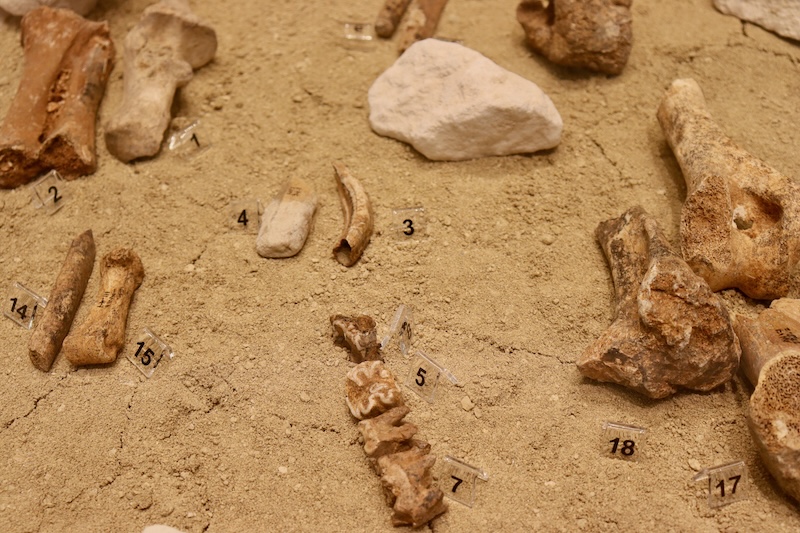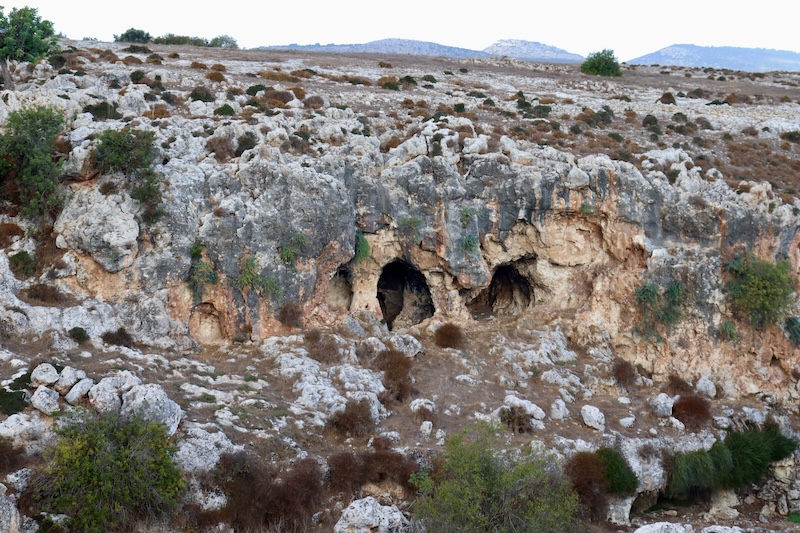
- Dwarf hippos and elephants once lived on Cyprus but went extinct around 14,000 years ago, likely due to hunting by humans.
- A small population of 3,000-7,000 Stone Age humans could have hunted these animals to extinction within 1,000 years.
- Researchers used fossil data and computer models to reconstruct likely scenarios about the animal populations and hunting pressure, and concluded that human hunting caused the extinctions.
Dwarf hippos and elephants once roamed the Mediterranean island of Cyprus. They disappeared some 14,000 years ago, not long after humans arrived on the island at the end of the last Ice Age. Did that human population – a group perhaps numbering only 3,000 to 7,000 individuals – cause the animals’ extinction? Controversy has surrounded this question. But now, a new study suggests that these Stone Age humans were indeed responsible.
Scientists published their findings in the peer-reviewed journal Proceedings of the Royal Society B on September 18, 2024.
Did a few thousand people hunt the hippos and elephants to extinction?
There’s been controversy over whether humans were responsible for the extinction of the dwarf hippos and elephants on Cyprus. Changing environmental conditions and inbreeding have been considered as possible reasons. Some researchers thought that the animals disappeared before the arrival of humans. Others felt there simply weren’t enough early humans in Cyprus to kill off the animals.
Scientists believe that humans arrived in Cyprus about 13,000 to 14,000 years ago. And they think that the population grew to several thousand within just a few hundred years after arrival on the island.

Fertility, longevity and population size
So, did humans hunt these creatures to extinction? To answer that question, the scientists examined likely scenarios, using computer models. They used data on fossils of the dwarf hippos and elephants, and archaeological evidence of early human presence in Cyprus, for the analysis.
First, dwarf hippo and elephant fossils were used to figure out how much these animals would have weighed. That allowed the researchers to estimate population sizes, fertility, and longevity. They also estimated the animals’ growth rate by comparing then to closely related species alive today, the pygmy hippo and African elephant.
With this information, they then created computer models of scenarios resulting from the arrival of human hunters. The scientists estimated hunting and harvesting efficiency, and how much energy the hunters would have needed from their prey for survival on the island.
Theodora Moutsiou of Cyprus University, a paper co-author, said in a statement:
Cyprus is the perfect location to test our models because the island offers an ideal set of conditions to examine whether the arrival of populations of humans ultimately led to the extinction of its megafauna species. This is because Cyprus is an insular environment and can provide a window back in time through our data.
Evidence points to human cause for extinctions
The results showed that a population numbering between 3,000 and 7,000 people could have easily caused the extinction of the dwarf hippos, followed by the dwarf elephants. This progression of the disappearance of these animals is supported in the fossil record. Moreover, the models predicted that these extinctions could have occurred in less than 1,000 years.
Corey Bradshaw of Flinders University is the lead author of the paper. He said:
Our results provide strong evidence that paleolithic peoples in Cyprus were at least partially responsible for megafauna extinctions during the Late Pleistocene and early Holocene. The main determinant of extinction risk for both species was the proportion of edible meat they provided to the first people on the island.
Our research lays the foundation for an improved understanding on the impact small human populations can have in terms of disrupting native ecosystems and causing major extinctions even during a period of low technological capacity.

Meet the Cyprus dwarf hippos and elephants
Cyprus isn’t the only Mediterranean island that once had dwarf hippos and elephants. Other islands in the area, like Malta and Sardinia, did too. On Cyprus, the diminutive elephants and hippos were the largest animals on the island when humans arrived. The animals had no natural predators on the island.
Why were they so small? A phenomenon called insular dwarfism resulted in smaller versions of these otherwise large creatures found on the mainland. These animals evolved a reduced body size due to fewer food resources on the island.
The Cypriot pygmy hippopotamus (Phanourios minor), according to fossil evidence, measured a bit over 2 feet (.6 meter) tall and 4 feet (1.2 meters) long. It likely weighed just 290 pounds (230 kg). That’s about the size of the pygmy hippopotamus found today in western Africa. In comparison, Phanourios’s closest living relative, the common hippopotamus, is about 5 feet (1.5 meters) tall, ranges in length from 9 to 16 feet (about 3 to 5 meters), and can weigh over 3,000 pounds (1,300 kg).

Also on the island was the Cypriot dwarf elephant (Palaeoloxodon cypriotes). These elephants weighed about 1,100 pounds (500 kg). and may have measured just over 3 feet (1 meter) tall. Palaeoloxodon descended from the now-extinct straight-tusked elephant that lived in mainland Europe and Western Asia during the middle and late Pleistocene (770,000 to 11,700 years ago). The males were about 13 feet (4 meters) tall and weighed 29,000 pounds (13,000 kg), while females measured 10 feet (3 meters) tall and weighed over 12,000 pounds (5,400 kg).
Bottom line: A new study shows that dwarf hippopotamus and elephants that once lived on the Mediterranean island of Cyprus were likely driven to extinction by humans about 14,000 years ago.
Source: Small populations of Palaeolithic humans in Cyprus hunted endemic megafauna to extinction
Read more: Ice Age humans: Did they affect the extinction of large mammals?











